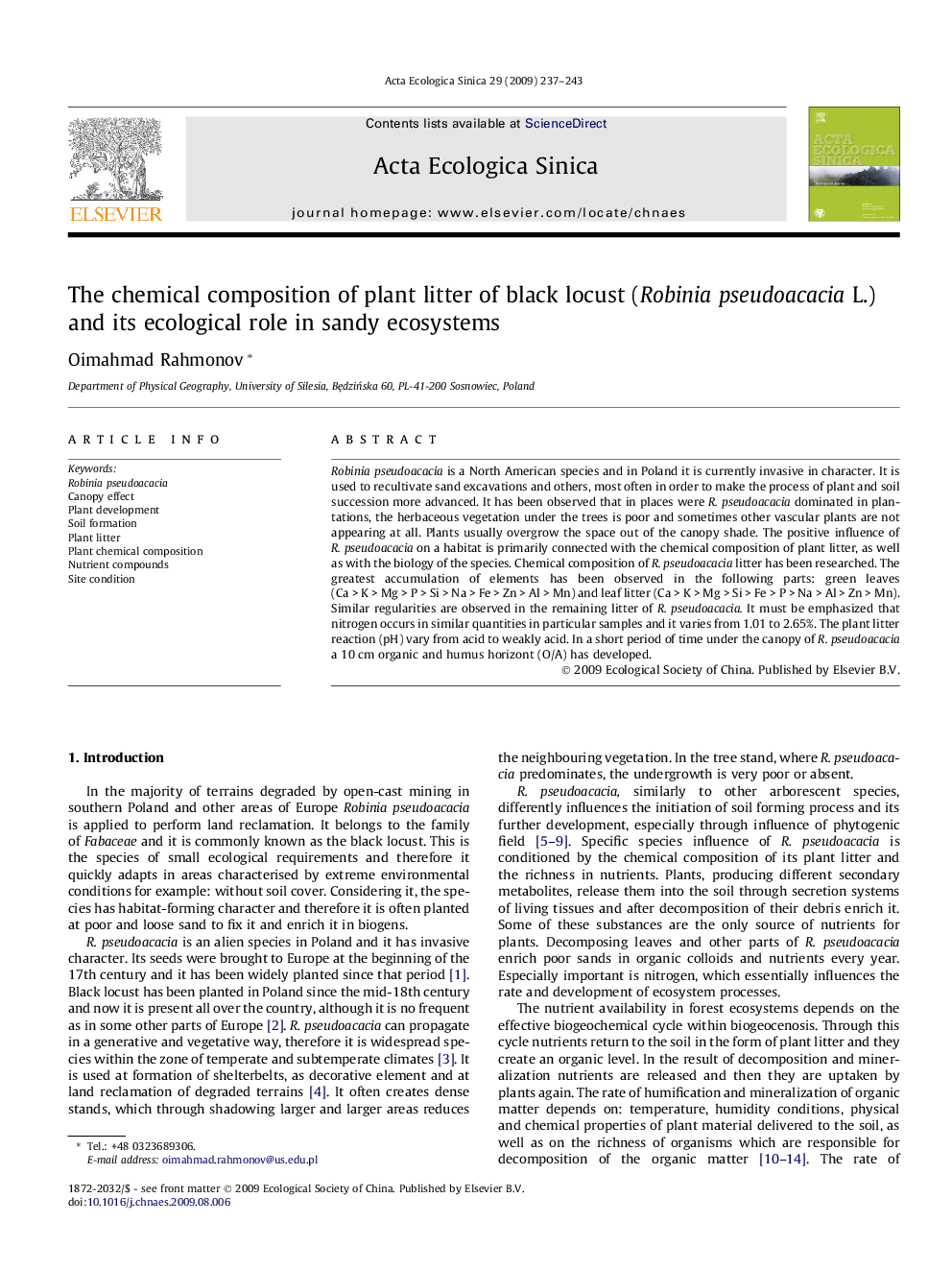| کد مقاله | کد نشریه | سال انتشار | مقاله انگلیسی | نسخه تمام متن |
|---|---|---|---|---|
| 4380172 | 1303972 | 2009 | 7 صفحه PDF | دانلود رایگان |

Robinia pseudoacacia is a North American species and in Poland it is currently invasive in character. It is used to recultivate sand excavations and others, most often in order to make the process of plant and soil succession more advanced. It has been observed that in places were R. pseudoacacia dominated in plantations, the herbaceous vegetation under the trees is poor and sometimes other vascular plants are not appearing at all. Plants usually overgrow the space out of the canopy shade. The positive influence of R. pseudoacacia on a habitat is primarily connected with the chemical composition of plant litter, as well as with the biology of the species. Chemical composition of R. pseudoacacia litter has been researched. The greatest accumulation of elements has been observed in the following parts: green leaves (Ca > K > Mg > P > Si > Na > Fe > Zn > Al > Mn) and leaf litter (Ca > K > Mg > Si > Fe > P > Na > Al > Zn > Mn). Similar regularities are observed in the remaining litter of R. pseudoacacia. It must be emphasized that nitrogen occurs in similar quantities in particular samples and it varies from 1.01 to 2.65%. The plant litter reaction (pH) vary from acid to weakly acid. In a short period of time under the canopy of R. pseudoacacia a 10 cm organic and humus horizont (O/A) has developed.
Journal: Acta Ecologica Sinica - Volume 29, Issue 4, September 2009, Pages 237–243